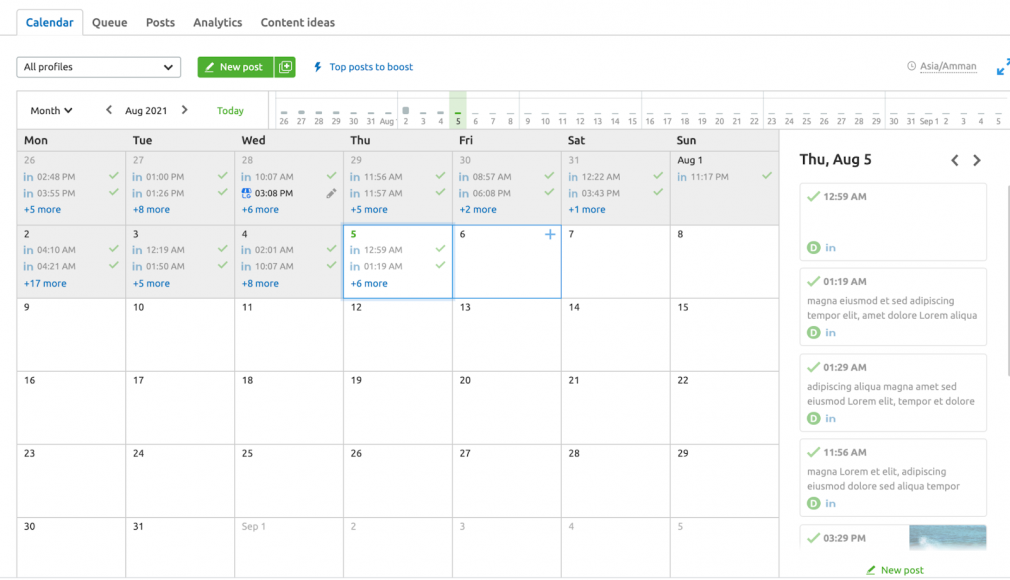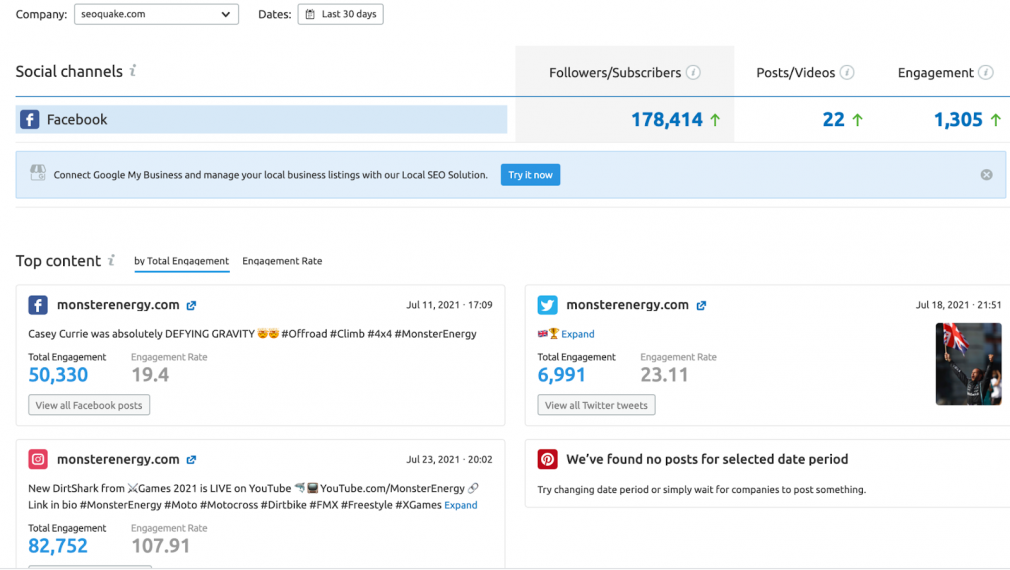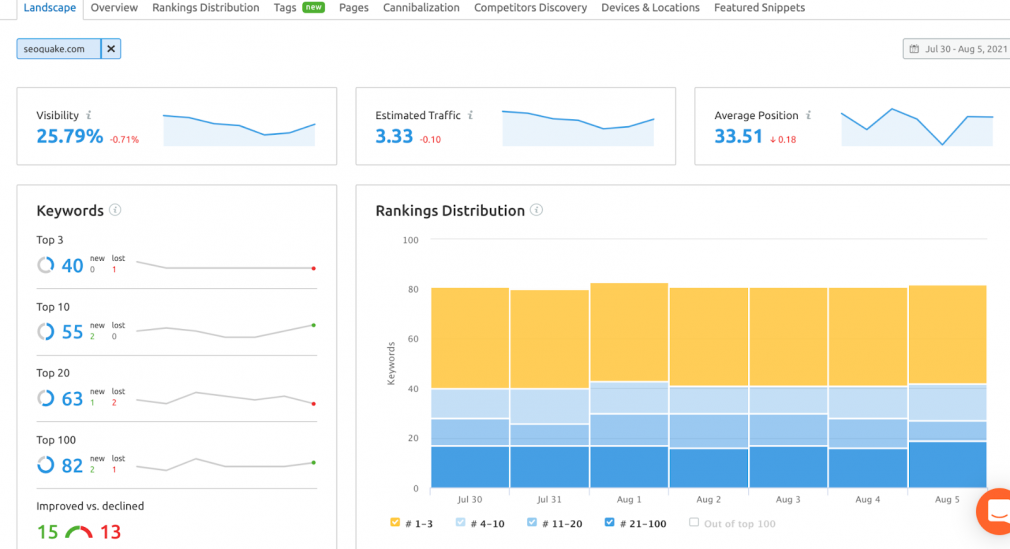Key performance indicators (KPIs) help you measure your progress. The term refers to a measurable value that indicates how effective a company is in achieving its key business objectives.
KPIs are used to evaluate the success of organizations in reaching their targets. Low-level KPIs focus on processes within departments like marketing, sales, HR, etc.
Every company’s marketing strategy and efforts should be measurable so companies can optimize their marketing performance, allocate adequate marketing budget and work more efficiently with other teams.
Here are 20 marketing KPIs that are important for every business:
1. Sales Growth
The best way to measure the effectiveness of your marketing strategy is by measuring the growth in sales revenue. With this metric, you’re looking at how much of your total revenue was influenced by your marketing strategies. This is a great way to show your team the value of their efforts.
2. Leads
In a similar fashion, it’s helpful to know the number of leads your sales team closed. More leads mean more sales opportunities and a better chance of sales growth.
To be extra thorough, calculate your sales-qualified leads (leads considered “sales-ready” based on specific activities completed or lead score) and sales accepted leads (leads the sales team has contacted).
3. Lifetime Value of a Customer
This KPI tracks the revenue a business can expect from one customer over a lifespan. This is a good way to measure your company’s ROI and better strategize your business.
The lifetime value of a customer is calculated in a few ways using a formula that may vary according to your needs and the data you have.
4. Digital Marketing ROI
Return on investment assesses monthly and annual performance. Tracking ROI helps business owners plan strategies and budgets for upcoming periods.
Your return on investment indicates whether you should continue your efforts or stop using a particular marketing strategy (depending on the cost).
5. Cost of Customer Acquisition
This KPI refers to the cost incurred while convincing a potential customer to buy. With the cost of customer acquisition, a company can gauge how much they spend while acquiring each customer and budget accordingly.
The cost of customer acquisition is usually calculated by dividing the Total marketing investment by the number of customers acquired.
6. Sales Team Response Time
Measuring how fast your sales team responds to leads can be beneficial in improving any customer service or sales process.
7. Website Traffic to Website Lead Ratio
This KPI measures how much of your website visitors are converted into leads. It can also indicate the quality of the traffic your website generates. To improve this ratio, focus on improving the conversion rate.
8. Website Lead To Marketing Qualified Lead (Mql) Ratio
Use this KPI to track the quality of the leads your marketing strategies generate. This ratio indicates the number of the total leads generated by your website that are promoted to Marketing Qualified Lead. If this ratio is low, you should monitor the quality of your website traffic.
9. Quoted To Closed Customer Ratio
This refers the number of prospects your sales team converts into customers. Monitoring this helps you understand where process improvements are needed.
10. Website Traffic
This KPI measures the number of people visiting your website. Visitors are potential leads that can be turned into customers. Monitoring your website traffic helps you gather relevant information about your website visitors so you can create marketing campaigns that target the right audience.
The Organic Traffic Insights tool combines your Google Analytics, Google Search Console, and Semrush data into a single dashboard. This data includes click-through rate, sessions, and volume with organic keywords and rankings found by Semrush and Google Search Console.
Social media KPIs help you plan out your social media content to your target audience.. Social media sites like Facebook and Twitter have built-in tools that track and analyze this information for you.
However, there are other tools and platforms that can also help you monitor your social profiles and track your competitors’ profiles.
For example, the Social Media Toolkit includes a poster tool that can schedule social media posts (the Social Media Poster), a tracking tool that offers insights to you and your competitors’ social media performance (the Social Media Tracker), and a platform for building and tracking social media ad performance (Social Media Ads). The Social Media Analytics tool allows you to see your internal analytic metrics for your Facebook, LinkedIn, and Instagram channels.


12. Email Marketing Performance
Email marketing strategies are a great booster for the growth of your business. Analyze your emails’ open rates, delivery rates, unsubscribe rates, forward or shares and click-through rates to better improve your email marketing strategy.
13. Inbound Link Building
This KPI is an important aspect of SEO strategy. The more people that link to your website, the more traffic you earn. Inbound links can also increase your rankings.
However, you need to ensure the inbound links your website gets are from reputable and relevant domains.
14. Landing Page Conversions
Build your website landing pages in a way that clearly states your offer and CTA. From there, check the number of people that visit your landing page and how many actually converted (signed up, downloaded something, etc.) Make use of appropriate SEO & CRO if you want to improve your conversion rate.
15. Blog Post Visits
This KPI measures your blog posts’ engagement among your customers. Blog posts can boost the amount of traffic your website generates, so it’s beneficial to pay attention to their quality and length.
You can use SEO tools to track and analyze organic traffic and backlinks to your blog posts.
16. Mobile Traffic Leads and Conversion Rates
Is your website well optimized for smartphones? Millions of users browse the internet with their smartphones and it’s been shown that Google shows a preference for websites that are optimized for mobile phones.
You should have information on the number of visitors that access your website using mobile devices. You should pay attention to popular mobile devices, mobile traffic, the number of lead conversions from mobile devices, etc.
17. Organic Traffic/Top Five Entry Pages
In digital marketing, businesses want the majority of their traffic from organic search, as this shows the number of people who found the website on their own.
SEO optimization increases your organic traffic, so ensure you refine your SEO strategy appropriately. Check the top five blog posts and landing pages for your website and leverage them, as they bring in most of your website visitors.
This KPI measures customer satisfaction. It shows the likelihood that customers would recommend your business to others and can gives you direct feedback and insights from your customers.
Listen to your customers to understand what they truly need. Leverage this KPI to ensure you keep them satisfied.
19. Follower Growth
One of the most important KPIs to track on social media is your accounts’ follower growth. Usually, social media marketing aims to increase brand awareness and audience engagement. Your follower count is one easy way to ensure your social media strategies are reaching and delighting your target audience.
Follows mean they want to see more of your brand, your offers, and your content. Sponsored campaigns are a great way to increase the follower base.
20. Search Rankings
Search engine rankings are one of the most popular digital marketing KPIs used. You’ll always want to stay on top of your website’s placement in SERPs (Search Engine Result pages). Your search ranking is your opportunity to draw more organic traffic (aka traffic you don’t have to pay for.)
To monitor your organic and paid position in SERPs, you can use the Position Tracking tool on Semrush and track the performance of your website. This tool tracks where your website appears on the SERPs for keywords of your choice. Input your target keywords, and the tool will return a wealth of data, including any position changes, SERP features, competitors, and the top keywords you rank for.

Conclusion
To monitor your digital marketing performance over time, you should set clear business objectives, identify your targets, establish your major KPIs, and choose the appropriate digital marketing tools.
Monitor your KPIs and take actions based on the data you see. You’ll avoid any common mistakes that digital marketers make by staying on top of your performance.

